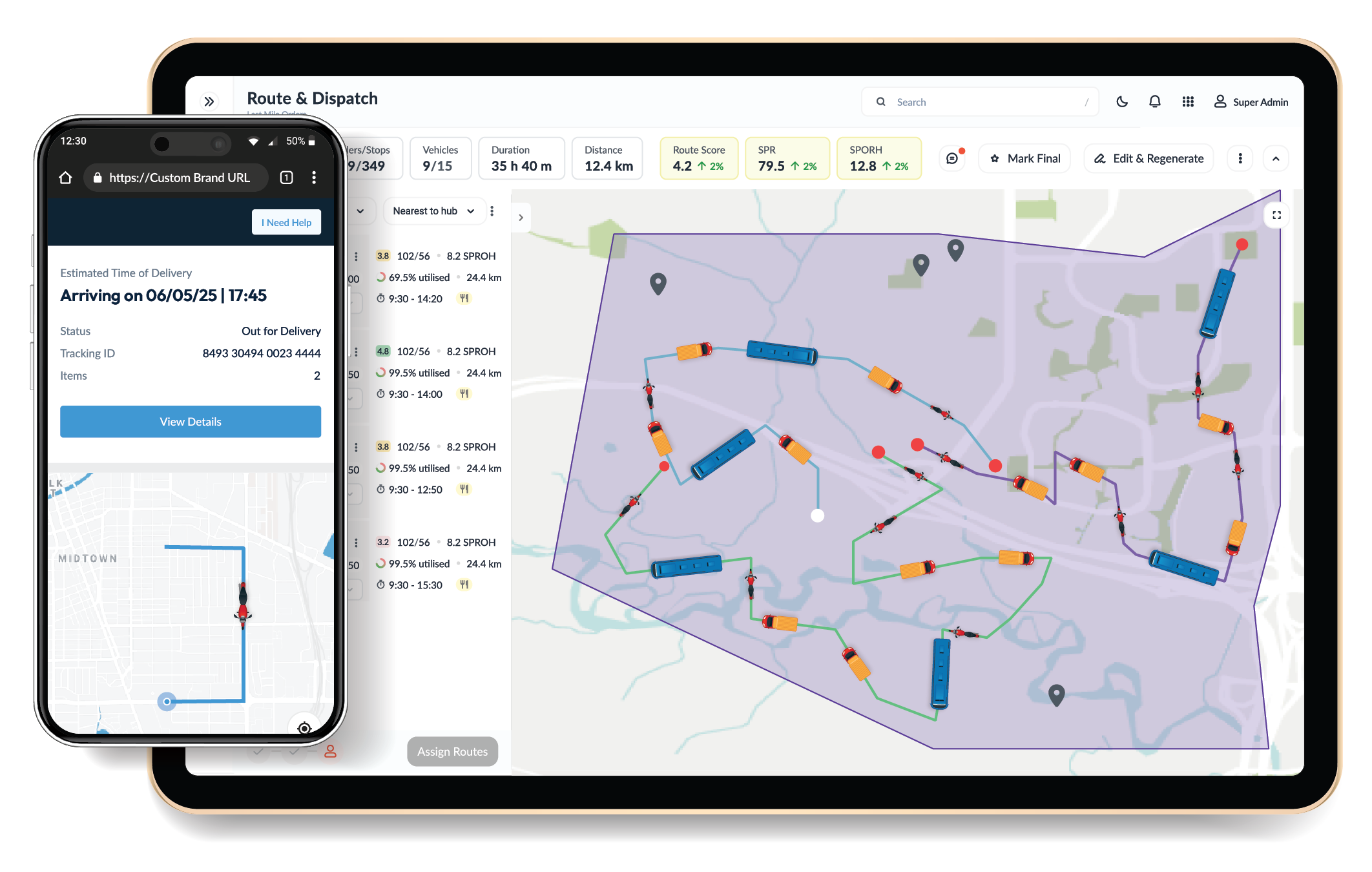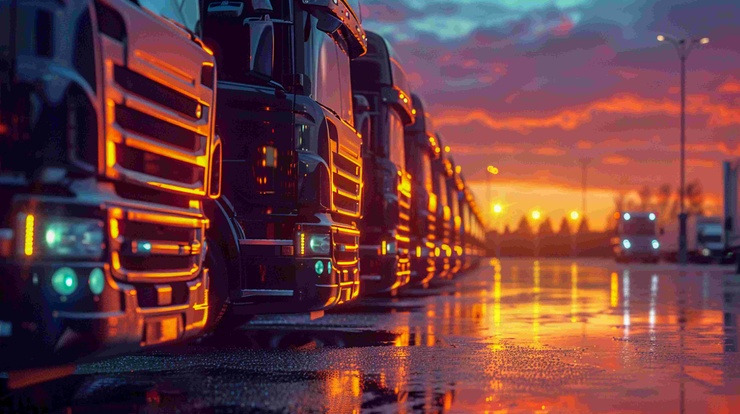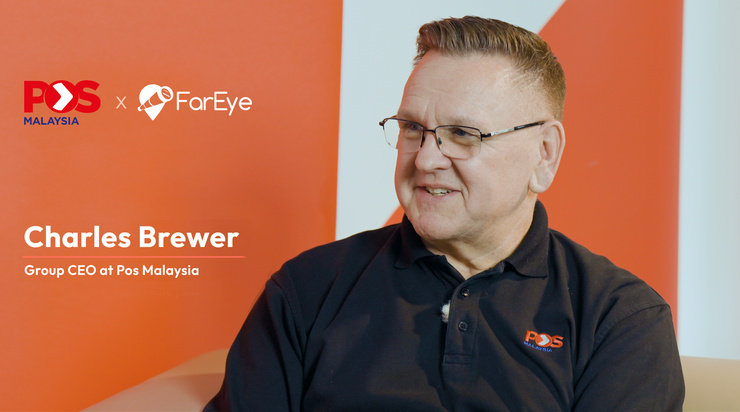- Route
The Benefits of Automated Route Mapping for High-Density Deliveries
Table of Contents
- Understanding Route Mapping: The Engine Behind Smart Deliveries
- Why High-Density Delivery Needs a New Approach
- The Automated Route Mapping Difference: How It Works
- Transformative Benefits for Dispatchers and Supply Chain Managers
- FarEye: Raising the Bar for Automated Route Mapping
- Moving Forward: The Competitive Edge of Automated Route Mapping

Efficiency is the new currency in high-density delivery networks. In cities where demand and complexity are growing daily, enterprises and their dispatchers face a persistent challenge. How do you reliably deliver more, faster and at a lower cost without burning out teams or customers?
A recent study by the World Economic Forum shows that by 2030, delivery vehicles could face up to 34 additional minutes of congestion daily. This would result in more than 200 hours of lost productivity per delivery vehicle each year, placing a significant strain on urban logistics. For businesses scaling operations across hundreds or thousands of stops each day, the real differentiator is no longer just fleet size or driver count. It’s the intelligence behind every route, powered by automation, AI and seamless integration.
This is where automated route mapping moves from being a convenience to a critical advantage.

Understanding Route Mapping: The Engine Behind Smart Deliveries
Route mapping is more than a digital alternative to paper maps. It is the backbone of modern dispatch. Route mapping brings together historical trends, live data and business constraints to generate the smartest path between dozens or even hundreds of daily stops.
For high-density deliveries, the old ways no longer suffice. Traditional methods, spreadsheets, outdated maps and experience-driven intuition hit a wall when urban congestion, driver schedules and real time delivery promises collide. Each manual decision amplifies operational risk, from higher fuel bills to missed ETAs and overworked staff.
Automated route mapping takes these pain points off the table. Using advanced algorithms and AI, these systems ingest volumes of data:
- Real time traffic and weather
- Customer time windows
- Delivery priorities and constraints
- Vehicle types, capacities and compliance
- Shift patterns and local regulations
They transform this data into actionable, efficient routes, reducing manual workload and boosting overall performance.
Why High-Density Delivery Needs a New Approach
High-density delivery isn’t just about delivering more parcels per mile. It’s about synchronizing a web of moving parts: multiple stops, variable package sizes, evolving traffic patterns and constantly shifting priorities. Each small inefficiency is multiplied at scale.
Key challenges unique to high-density scenarios include:
- Dynamic Order Volumes: Fluctuating volumes demand rapid scaling without added manual planning.
- Urban Constraints: Congestion, delivery windows, parking limitations and compliance requirements.
- Resource Utilization: Keeping vehicles and drivers fully utilized, no empty runs, no idling.
- Customer Expectations: Narrow, accurate ETAs and full visibility, even for late or rerouted orders.
Manual approaches struggle under this pressure. But with automated route mapping, enterprises gain the flexibility and precision they need to operate at scale.
The Automated Route Mapping Difference: How It Works
Automated route mapping apps have evolved to become strategic partners for logistics teams. They don’t just sequence stops; they orchestrate entire delivery ecosystems. Here’s how:
- AI-Driven Insights and Dynamic Planning
Modern route mapping leverages machine learning to analyze thousands of past deliveries and predict the fastest, most reliable routes. AI continually refines routing strategies, learning from delays, seasonal trends and driver feedback. - Constraint-Based Scheduling
Automated systems handle 100+ business constraints:
Vehicle size and type
Time windows for each stop
Driver skills and hours
Temperature controls for perishables
Regulatory compliance (DoT, city ordinances)
This eliminates guesswork and reduces compliance risk. - Real time Adaptability
When circumstances change, a customer cancels, a road closes or traffic spikes, automated apps instantly re-optimize routes. Dispatchers don’t scramble to fix errors; the system delivers a new, viable plan in seconds. - Integrated Fleet Management
Best-in-class solutions unify route planning, dispatch, tracking and analytics on a single platform. The result? Every stakeholder, driver, dispatcher and customer has access to live updates, accurate ETAs and full visibility.
Transformative Benefits for Dispatchers and Supply Chain Managers
So what does all this mean, practically, for high-density delivery operations? The transformation is both immediate and lasting:
- Productivity Gains
Automated planning slashes route generation time. FarEye, for example, can process thousands of orders in under 10 minutes, a task that once took hours. Dispatchers are freed from repetitive tasks and can focus on high-value problem-solving. - Cost Savings
By minimizing empty miles and optimizing driver shifts, automated mapping ensures every vehicle is loaded to capacity. In real-world case studies, this approach delivers up to 40% reductions in total route distance and up to 46% lower delivery costs. - Improved SLA Adherence
AI-powered predictions mean more accurate ETAs and higher first-attempt delivery rates, even as volumes rise. Customers get narrow, reliable time windows, building trust and loyalty. - Greater Resource Utilization
Dynamic planning ensures that vehicles and drivers are always assigned where they’re needed the most, with no bottlenecks or idle time. This supports scalability, especially in peak seasons or during promotional spikes. - Data-Driven Decision Making
Automated platforms collect and analyze granular data on every route, stop and exception. Leaders gain insights into performance trends, bottlenecks and cost drivers, enabling continuous improvement. - Sustainability
With route mapping focused on reducing unnecessary miles, enterprises cut emissions and fuel costs, helping meet both regulatory standards and sustainability targets.
FarEye: Raising the Bar for Automated Route Mapping
Enterprises seeking more than just incremental gains are turning to FarEye’s route mapping app. FarEye combines:
- Proprietary AI and ML algorithms for smarter, faster and more adaptive routing.
- Plug-and-play APIs for seamless integration with existing TMS, OMS and telematics.
- Customizable modules for parcel, freight, food, hyperlocal and territory planning.
- Advanced analytics to surface insights and support strategic decisions.
Features like green delivery windows, gig fleet orchestration and predictive service times set the standard for what’s possible in high-density delivery.
Moving Forward: The Competitive Edge of Automated Route Mapping
In today’s world, where every mile and every minute matters, automated route mapping isn’t a luxury: It’s the difference between competing and falling to the competition. For dispatchers and supply chain managers, the answer is less stress, more control and the ability to confidently scale operations.
Is there more in you to deliver? See how FarEye’s AI-powered routing engine can futureproof your crowded delivery network by enabling you to make every delivery faster, greener and more efficient.
Source:
https://reports.weforum.org/docs/WEF_Transforming_Urban_Logistics_2024.pdf

Komal Puri is a seasoned professional in the logistics and supply chain industry. As the AVP of Marketing and a subject matter expert at FarEye, she has been instrumental in shaping the industry narrative for the past decade. Her expertise and insights have earned her numerous awards and recognition. Komal’s writings reflect her deep understanding of the industry, offering valuable insights and thought leadership.
Let's Talk to Our Experts and Optimize Your Deliveries Today!
An expert from our team will reach out within 24 hours
Related resources


